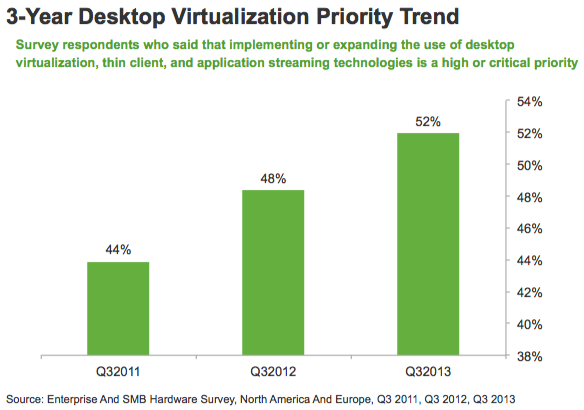Citrix Acquires Framehawk, Bolsters Enterprise and DaaS Portfolios
This morning Citrix announced the acquisition application mobilization vendor Framehawk for an undisclosed sum as the battle for high performance for corporate Windows apps on mobile devices rages on. Here’s my take:
It's a good acquisition for Citrix and in turn for I&O pros for 3 reasons:
- Some of Framehawk's technology will be additive to Citrix's enterprise portfolio. Specifically, Framehawk's framebuffering protocol – called Lightweight Framebuffer Protocol, or LFP – is designed for mobile carrier networks like 4G/LTE where there is often highly variable latency, loss, and jitter. Citrix will add it to their arsenal alongside HDX to improve the end user experience of server-hosted Windows applications on mobile devices for XenDeskop App Edition and XenDesktop.
- It will be a boon for DaaS providers' customer experience. Citrix is in the business of building a Desktops-as-a-Service (DaaS) platforms for service providers. One of the barriers to the success of DaaS in the enterprise, and a potential source of value for service providers, is the user experience on mobile devices over mobile networks. Another player to watch the remote desktop/app protocol space for mobile networks is RapidScale.
- It's a competitive take-out play as well. Delivering Windows apps from the datacenter to both corporate and employee-owned desktops, laptops and mobile devices is what Citrix does – it's their place in the technology universe. Framehawk's technology approach, while expensive, has some advantages. Citrix was probably starting to see them in more deals as competition.
What it means for I&O pros: If you’re struggling withCitrix XenApp performance over mobile networks, the Framehawk technology should help once Citrix announces more specific plans for incorporating it into their offerings.

A Good Year for Desktop Virtualization Lies Ahead
Forrester expects desktop virtualization overall to have a good year in 2014. With the end-of-life for Windows XP coming up in April, Forrester is seeing a flurry of activity from IT clients whose Windows 7 migration plans are at risk, and virtualization technologies offer hope. This in addition to the growing trends toward mobility and BYOD will amplify the demand for technologies like XenDesktop and Framehawk that allow companies to defer upgrading or replacing older-generation Windows productivity and client/server apps while keeping the data itself safely inside the firewall.
